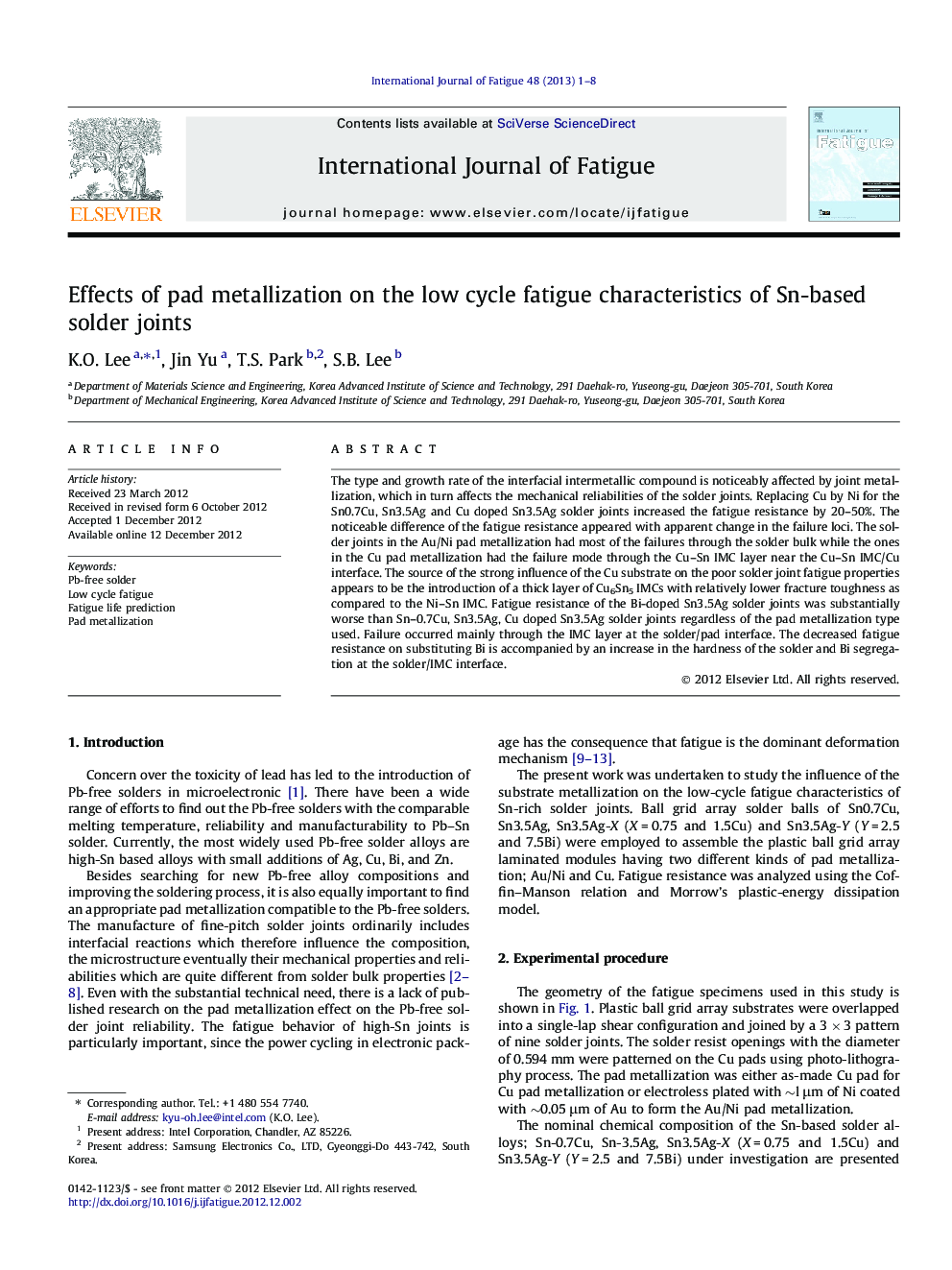| Article ID | Journal | Published Year | Pages | File Type |
|---|---|---|---|---|
| 780869 | International Journal of Fatigue | 2013 | 8 Pages |
The type and growth rate of the interfacial intermetallic compound is noticeably affected by joint metallization, which in turn affects the mechanical reliabilities of the solder joints. Replacing Cu by Ni for the Sn0.7Cu, Sn3.5Ag and Cu doped Sn3.5Ag solder joints increased the fatigue resistance by 20–50%. The noticeable difference of the fatigue resistance appeared with apparent change in the failure loci. The solder joints in the Au/Ni pad metallization had most of the failures through the solder bulk while the ones in the Cu pad metallization had the failure mode through the Cu–Sn IMC layer near the Cu–Sn IMC/Cu interface. The source of the strong influence of the Cu substrate on the poor solder joint fatigue properties appears to be the introduction of a thick layer of Cu6Sn5 IMCs with relatively lower fracture toughness as compared to the Ni–Sn IMC. Fatigue resistance of the Bi-doped Sn3.5Ag solder joints was substantially worse than Sn–0.7Cu, Sn3.5Ag, Cu doped Sn3.5Ag solder joints regardless of the pad metallization type used. Failure occurred mainly through the IMC layer at the solder/pad interface. The decreased fatigue resistance on substituting Bi is accompanied by an increase in the hardness of the solder and Bi segregation at the solder/IMC interface.
► We study the pad metallization effect on the fatigue properties of the solder joints. ► Pad metallization has a marked effect on the fatigue resistance of the solder joints. ► Ni pad metallization provides about 20–50% higher fatigue resistance than Cu. ► The type and growth rate of the IMC is noticeably affected by joint pad metallization. ► Bi doping in Sn-based solder makes the fatigue resistance substantially worse.
